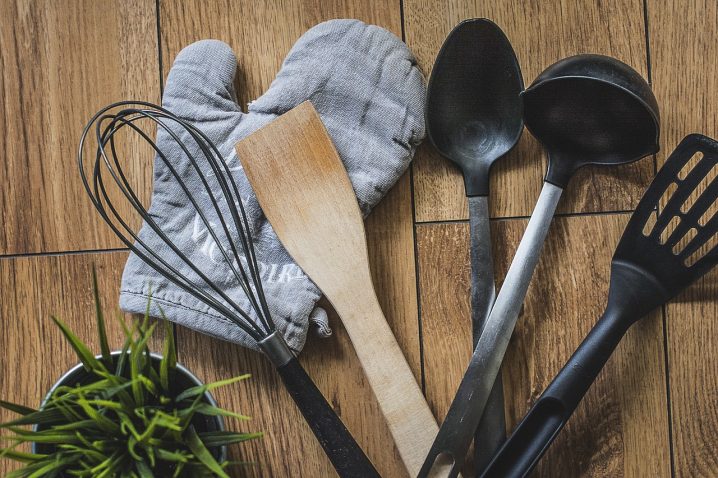Before you retire your kitchen utensils to become art projects, ask yourself if you’re using them correctly. Sometimes utensils are difficult to use because they’re being used incorrectly.
For example, do you grate cheese with the cheese grater in an upright position? If so, you’re working harder than you should. Place the grater on its side and grate your cheese side-to-side to give your arm a rest.

Here are six more hacks to use in your kitchen:
- Use the tabs on your aluminum foil and plastic wrap boxes
If you’re like most people, you’re thinking, “what tabs?” This secret has been out for some time now, but if you haven’t heard of it, it will give you perfectly torn pieces of foil and plastic wrap.
If you look on either end of the box, you’ll see a small perforation. Push in each perforation, and the cardboard will go right into the core of the roll and it will hold the roll in place while you dispense and tear it off. No more struggling to tear off sheets of foil or plastic wrap!
- Refrigerator drawers
Most people use their bottom refrigerator drawers to store produce, but there’s more to refrigerator drawers than extra space. Universal Appliance and Kitchen Center points out that to keep produce fresh in those crisper drawers, you need a certain level of humidity. How much or how little humidity you need depends on the produce. Many refrigerators allow you to control the humidity of each drawer. If you don’t have controls, your drawers are high humidity by default.
High humidity is good for produce that tends to wilt like leafy greens, cilantro, basil, and vegetables with thin skin like asparagus. Low humidity is good for produce that tends to rot. For example, pears, melons, avocados, and apples.
Now you have a reason to use those humidity controls, and if you don’t have any controls, perhaps it’s time to upgrade your refrigerator.
- Your garbage disposal
Hot water seems like a universal solution for everything, but it’s not good for your garbage disposal. Using hot water makes food soft and mushy, which makes it cling to the sides instead of getting ground up. Cold water hardens food, which makes it easier to be chopped up and pushed through the drain pipe.
- Corkscrews
Next time you break out a bottle of wine, remember to use both hinges on your corkscrew. If you’ve never done that before, it’s a good opportunity to learn the proper way to present and open a bottle of wine.
First, hold the bottle of wine with the label facing away from you. The idea is to make sure the label faces the person you’re serving, if that person is someone other than yourself. Next, use the small knife attached to your corkscrew to slice around the foil of the wine at the second notch from the top of the bottle. Be sure to keep the label facing out the whole time.
After slicing off the foil, when the cork is exposed, place the tip of the corkscrew in the middle of the cork. Twist the corkscrew around about six times. Now you’re going to set the first hinge on the side of the bottle. The first hinge is the hinge closest to the top of the corkscrew. With the first hinge in place, pull the other side of the corkscrew up to pull the cork out halfway. Place the second hinge over the bottle and pull up, and remove the cork completely.
- Plastic spoons with a hole
Slotted spoons are good for draining water, but did you know the plastic spaghetti serving spoons with a round hole are actually made for measuring out portions of dry spaghetti?
Next time you make spaghetti, measure your portions with your spaghetti serving spoon instead of trying to guess how much spaghetti you’re holding.
- The hole in your pot handles
Most pots and pans come with handles that have a hole. While most people use these handles to conveniently hang their dishes, there’s another use – your spoon!
While cooking dishes like fettuccine, stew, soup, or even eggs, you can place the handle of your wooden spoon through the end of your pot or pan’s handle and it will stick straight up in place. No spoon rest required.
Knowledge is power
Now that you know how to use your kitchen properly, have fun with the next meal you prepare. If you find yourself struggling to use a kitchen tool, research it online to see if there’s an easier way. Chances are, there is.



